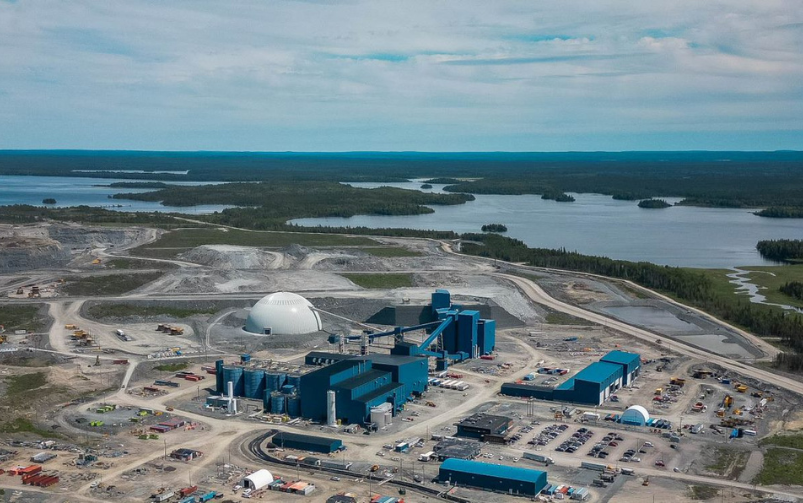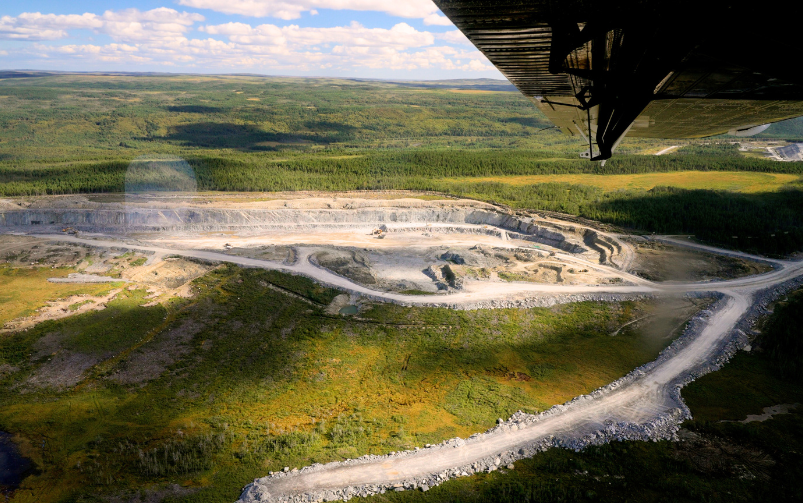Further claim staking will be restricted on the lands of two First Nations in B.C., including the Ehattesaht First Nation on the northwest coast of Vancouver Island, while the province develops a new approach to mineral tenure. Courtesy of the Ehattesaht First Nation
Leaders of the Gitxaała Nation and Ehattesaht First Nation have partially settled their appeal, temporarily preventing mineral claim staking on their territory while the B.C. government revises its Mineral Tenure Act (MTA).
On March 7, the provincial government announced new interim measures that suspend mining activities until 2029, and suspend the registration of new mineral claims indefinitely, in the traditional territories of the Gitxaała Nation and Ehattesaht First Nation—unless companies reach an agreement with the respective Nations. The two Nations also agreed to support amendments to the interim orders if they reach agreements with companies looking to mine or explore in their territories.
The interim measures are the latest update in response to a September 2023 B.C. Supreme Court ruling in which Justice Alan Ross found that there is a constitutional duty to consult First Nations before registering mineral claims, something which the current mineral claims process—where anyone can register a mineral claim online—had violated.
In the ruling, based on claims from two separate petitions by the Gitxaała Nation and the Ehattesaht First Nation, Ross gave the provincial government 18 months to update the MTA in consultation with First Nations and to include the duty to consult. However, the ruling allowed the current claim staking system to remain in effect, which prompted the Gitxaała and Ehattesaht Nations to submit a partial appeal of the decision to prevent further staking on their lands in the interim period.
“We have continually told the province and proponents that we are not against mining, but if you want to mine here, we have to find ways that keep our lands and waters healthy and that respect our rights and culture,” said Chief Simon John of the Ehattesaht First Nation in the March 7 press release from the province. “We know what bad mining looks like and we can’t go back there again.”
The measures have spurred a number of reactions from the industry. In a March 7 statement, Keerit Jutla, president and chief executive officer of the Association for Mineral Exploration (AME), assured the industry that the orders restricting mineral claim registrations and mining activities are a “temporary” measure that will be repealed when the new MTA is released in 2025. “The government has also assured us no further interim orders that restrict mineral claims in other parts of the province are expected,” he stated. “It remains business as usual for our members in the rest of B.C.”
McMillan law firm, however, raised concerns around what it referred to as an “unprecedented use of the Environment and Land Use Act power to suspend previously issued permits” in a March 11 bulletin, stating that “there is nothing that would preclude their future use in other areas of B.C. and other sectors.”
Speaking to CIM Magazine, Merle Alexander, a specialist in Indigenous resource law and principal of the Indigenous law group at the Vancouver-based law firm Miller Titerle + Company, pushed back on these concerns. “To my understanding, the [Gitxaała and Ehattesaht] Nations, in advance of [the measures] becoming public news, were reaching out to and working with exploration mining companies that were already in their territories,” Alexander said. “After the case came down, there were a lot of calls for a province-wide moratorium. And the provincial government rejected the idea to put interim measures in place.”
“They have only protected these particular two First Nations to get them to settle that aspect of the litigation,” Alexander further explained. “No matter how you look at it, it’s actually very much a sniper-like approach versus a shotgun approach.”
In its March 7 press release, the provincial government also announced that it was beginning consultations with First Nations, industry and other stakeholders on reforming the MTA. The government stated that the process will include a technical working group comprised of participants from the First Nations Leadership Council, the First Nations Energy and Mining Council, the B.C. government and a First Nations technical advisory group. Both AME and the Mining Association of British Columbia (MABC) have expressed their support for the industry to be part of the mineral tenure modernization process.
“It is unfortunate that industry is not yet part of this working group, despite our geological expertise and knowledge,” Jutla said in AME’s March 7 statement. “It is also very important the province is aware of, and carefully considers, the broader implication modernization has for our industry and how international capital markets perceive British Columbia as a place to invest.”
MABC president and CEO Michael Goehring expressed in a March 7 statement that it is critical that “adjustments to the MTA are incremental, respect existing mineral tenure holders’ rights and maintain certainty,” and added that “open, transparent and timely engagement that includes B.C.’s exploration and mining industry is imperative.”
While work on the MTA gets under way, the case is still not closed. The Gitxaała and Ehattesaht Nations are seeking a declaration from the B.C. Court of Appeal that the province’s Declaration on the Rights of Indigenous Peoples Act applies to all B.C. laws and that the courts should enforce it, which Justice Ross rejected in his September 2023 ruling.
Despite the concerns, Alexander does not see the interim measures as a major change, particularly as the industry has already been taking on the responsibility of consulting with First Nations for years. “[Mining companies] were presuming that there was a consultation obligation that they had to do the heavy lifting on,” he said. “[And] I don’t know that it radically changes things because I think that B.C. is a place of [consultation] best practice in the country.”




